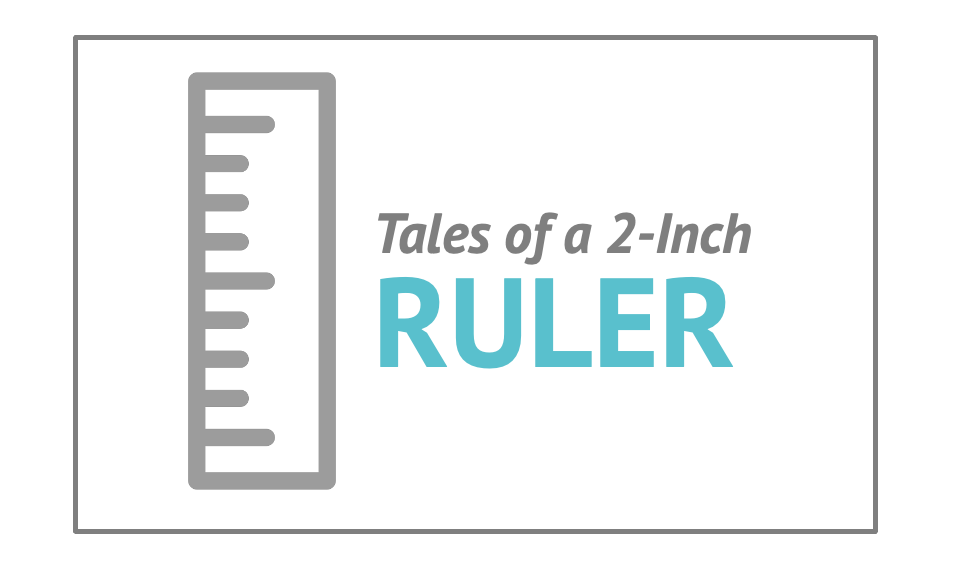How to ban two-inch rulers from your content. Sometimes the form of content falls short, especially on storytelling. Here are five quick and easy tips to beef it up.
To get the free Compound Return newsletter in your inbox, subscribe here.
What on earth can you measure with a two-inch ruler?
Around the end of the school year, my daughter brought home a two-inch ruler from the “prize box.” We looked around for things to measure, but after sizing up her chubby pinky finger, the useless tool was cast aside.
I found myself weirdly perturbed by this shard of plastic. After all, a ruler is theoretically a nice little score for a four-year-old. Think of all the things to be measured! Yet, a good idea became worthless thanks to a fatal flaw: a form that, quite literally, fell short.
Sometimes an idea can start off strong – let’s give rulers to the preschoolers! – but falter because the form wasn’t sufficient.

The same thing happens to content – commentaries, PowerPoints, web copy, all of it – far too often. But there are a few easy tweaks that can power up the form of content, so that a great idea has a fighting chance of winning audience engagement.
The Top Three Qualities that Make Content (and Preschool Prizes) Effective
It all boils down to what makes content, and preschool prizes, effective. According to this B2B content marketing report, the top three things that make content more effective are easy to identify:
In my experience, many investment firms actually do a decent job of #1 and #3. It’s the 2nd point – engaging and compelling storytelling – where they lose the plot.
“We can’t just turn our CIO market outlook into a chatty ghost-story campfire session,” you may be thinking. And that’s reasonable. But maybe engaging and compelling storytelling can be interpreted as a broader comment on engaging and sufficient form, which, for us human readers, includes storytelling, among other things. (For a preschooler’s ruler, of course, an engaging and sufficient form would be…longer than two inches.)
Here are five quick and easy ways to infuse thought leadership content with storytelling tools to make the form of content more engaging and sufficient:
By tweaking form with storytelling elements, we can better achieve that holy grail of financial content: audience engagement. It’s rarely the idea or the desired response that needs overhaul. Sometimes, it’s just the form that needs a few more inches.
Looking for a writer to help you create content? Reach out to learn more about how I can help you build your financial brand with engaging and human content.
Carolyn is a freelance financial writer with 15+ years of experience in financial services. She holds an MBA from the University of Chicago Booth School of Business and is a CFA charterholder. She writes from Washington D.C.
Posted By
Carolyn
Categories
Compound Return Newsletter, Content Marketing